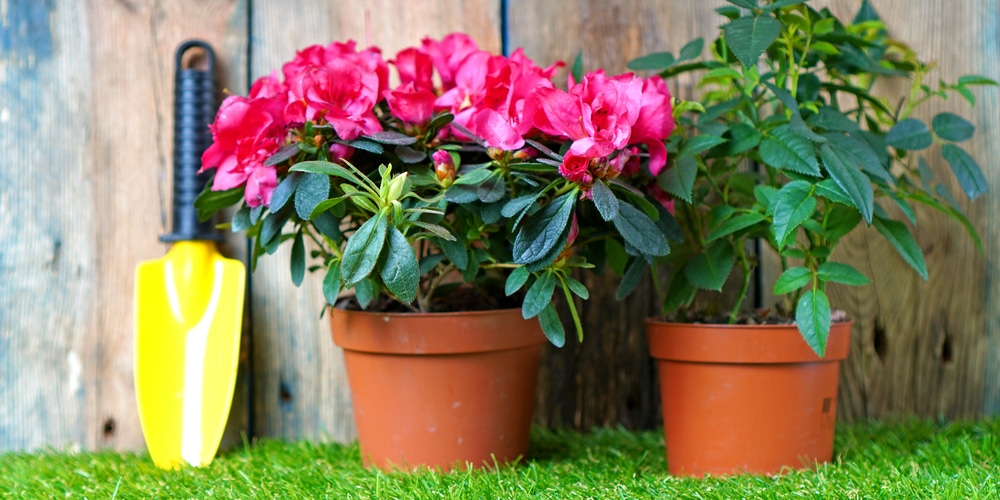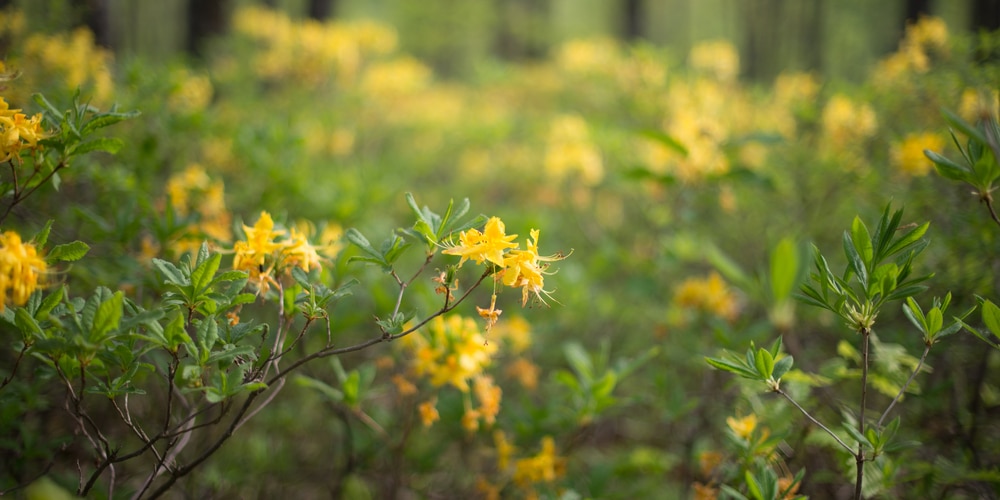There are two different types of azalea plants, those that can be planted outside and indoor houseplants. Outdoor azalea and rhododendrons are frost-hardy and can survive outdoors year-round. They can be grown in various climates and can cope with hot and cold weather.
Indoor azalea should be kept as houseplants but can be moved outdoors during the summer months. While it’s best not to leave an indoor azalea outside permanently, you can move your plant to a sunny area such as a patio for the summer. Let’s look at how to move an indoor azalea outside safely.
Can I move my indoor azalea plant outside?

It’s best not to plant an indoor azalea outside as you may not be able to leave the plant out year-round. Indoor azaleas will be affected by frost, cold, and drafts. They are less hardy than the outdoor variety and can be killed by frost.
Your indoor azalea can be moved outside onto a patio in the summer as long as it’s first acclimatized. When repotting your azalea, you can choose a container that will work well both indoors and out. Ensure the pot is big enough for your plant so that it has space to grow. Indoor Azaleas grow best when the soil is kept moist. T
hey prefer an acidic soil with a pH range of about 5.5. The ground should be well-draining to reduce the chances of the plant developing root rot. You can also add some organic matter to the earth. Peat moss, chopped leaves, or ground bark will help improve the quality and nutrition of the soil and allow your plant to thrive.
If your azalea’s leaves turn yellow, it’s a good idea to move it back indoors.
Things to consider before moving an indoor azalea outside

Azalea plants can do well outdoors in the correct climate. You’ll need to ensure your plant is properly cared for if it spends the summer outdoors. Bring your plant back inside in the fall or winter before it gets too cold. Here are some things to consider before moving your indoor azalea outside.
Location
If you decide to move your houseplant outside, you’ll need to find a good location. These plants thrive in dappled sunlight and prefer the morning sun, which isn’t too strong; in the afternoon, it’s best if your plant is in the shade. Don’t leave an indoor azalea outside in the scorching sun, or its leaves will burn and become discolored.
While it’s recommended to place your plant in a cool area that gets partial shade, it’s also worth noting that flowers won’t bloom in areas of low light.
Harden plants off
Before moving your plant outdoors, you’ll need to harden it off so that it gets used to the weather. This is important as your plant is used to living in a warm house during the winter.
In early May, you can move your plant outside in the mornings so that it can get some sunshine. Make sure your plant is brought back inside in the early afternoon. This will prevent it from being scorched by the sun and will mean it won’t get cold during the night.
Don’t move your plant outside without hardening it off even if you live in a warm climate. The nights can be cool, and your plant may be affected by fluctuating temperatures or drafts.
Place on gravel rather than soil
If you plan to sit your plant pot on the soil, it’s best to lay down some gravel or coarse grit first. These materials will stop worms from getting into your pot via the drainage holes.
Use climbers to provide shade
If you live in an apartment and have a balcony, you can move your plant outdoors in the spring and summer months. For balconies in full sun, plant taller, climbing plants to provide some shade for your azalea plant.
Move your plant inside in the fall
If your plants have been outside all summer, it’s a good idea to move them back into your home or into a greenhouse in the fall. Ensure you move your plant to a warmer location in September before it’s affected by frost. Your plant shouldn’t be left outside if the nighttime temperature is likely to fall to 45 or 50ºF.
Conclusion
Indoor azalea plants can be moved outdoors during the spring and summer months if you live in a warm climate. These plants aren’t very cold tolerant and can easily be killed by frost. Make sure you bring your plant back inside or move it to a greenhouse in the fall. Don’t leave your plant outside if frost is likely.